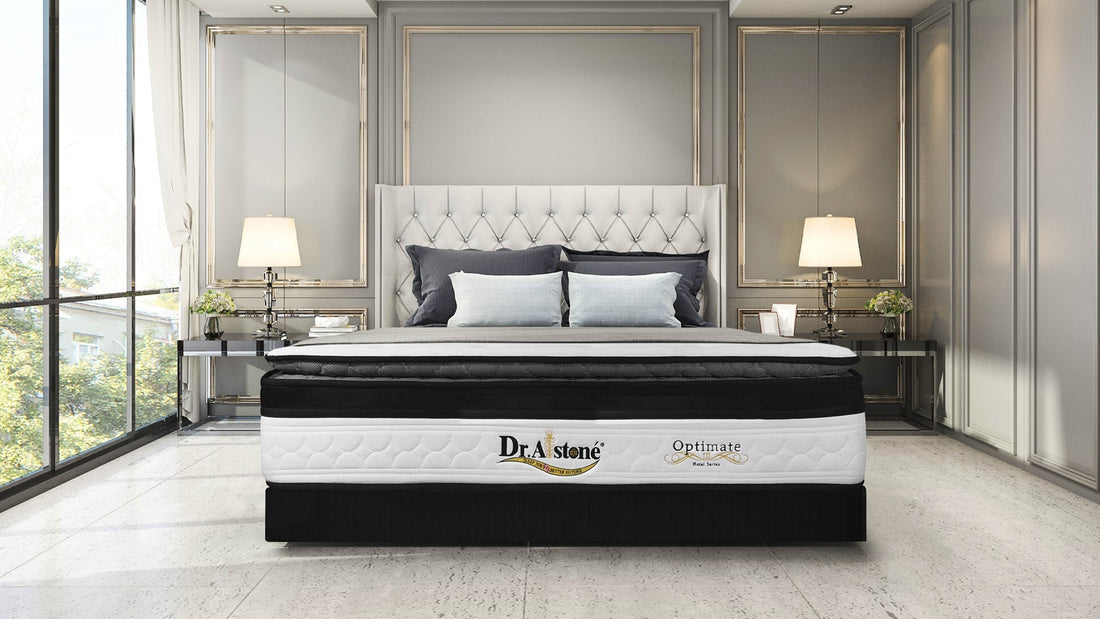When shopping for a mattress, you’ll likely come across memory foam mattresses and normal foam mattresses (often polyurethane foam).
While they may seem similar, there are significant differences in comfort, durability, support, and price. In this guide, we’ll compare memory foam vs. normal foam mattresses, helping you decide which is best for your sleep needs.

What is a Memory Foam Mattress?
Memory foam is a viscoelastic material originally developed by NASA in the 1960s. It softens in response to body heat and pressure, contouring to your shape and evenly distributing weight. This results in a “hugging” effect that provides superior support and pressure relief.
Benefits of Memory Foam Mattress
-
Excellent Pressure Relief – Reduces pressure points, making it ideal for people with joint or back pain.
-
Spinal Alignment – Promotes a neutral spine position, beneficial for back and side sleepers.
-
Motion Isolation – Absorbs movement, minimizing disturbances from a partner.
-
Hypoallergenic Options – Some memory foams are resistant to allergens like dust mites and mold.
Downsides of Memory Foam
-
Heat Retention – Traditional memory foam tends to trap heat, though newer gel-infused models improve breathability.
-
Slower Response Time – Can feel “sinking” or “stuck” due to slow response to pressure.
-
Higher Price – Generally more expensive than standard foam options.
What is a Normal Foam Mattress?
A normal foam mattress typically refers to polyurethane foam (polyfoam), a synthetic material used in various firmness levels. It’s widely used in budget-friendly mattresses and mattress toppers.
Benefits of Normal Foam Mattress
-
More Affordable – Generally cheaper than memory foam.
-
Faster Response – Offers a quicker bounce-back than memory foam, making movement easier.
-
Variety of Firmness Levels – Available in soft, medium, or firm options.
-
Lightweight – Easier to move compared to heavier memory foam models.
Downsides of Normal Foam
-
Less Pressure Relief – Does not contour as well as memory foam, potentially causing pressure points.
-
Lower Durability – Tends to break down faster, losing support over time.
-
Less Motion Isolation – More movement transfer, which may disturb a partner’s sleep.
Key Differences Between Memory Foam and Normal Foam Mattresses
|
Feature |
Memory Foam Mattress |
Normal Foam Mattress |
|
Material |
Viscoelastic foam |
Polyurethane foam |
|
Comfort & Support |
Conforms to body shape, excellent spinal alignment |
Firmer, less contouring |
|
Pressure Relief |
High |
Moderate to low |
|
Motion Isolation |
Excellent |
Moderate |
|
Durability |
7-10 years |
5-7 years |
|
Breathability |
Retains heat, but gel-infused models improve airflow |
Generally better airflow, but varies by design |
|
Price |
Higher |
More budget-friendly |
|
Best for |
People needing pressure relief, joint support, and motion isolation |
Budget-conscious buyers, stomach sleepers, and guest beds |
Which Mattress is Best for You?
Choosing between a memory foam mattress and a normal foam mattress depends on your sleep preferences and budget.
-
Choose Memory Foam If:
-
You experience joint, back, or muscle pain.
-
You sleep on your side or back and need pressure relief.
-
You share a bed and need motion isolation.
-
You prefer a “hugging” or contouring feel.
-
Choose Normal Foam If:
-
You prefer a more affordable mattress.
-
You sleep on your stomach and need a firmer surface.
-
You dislike the sinking feel of memory foam.
-
You need a lightweight mattress that’s easy to move.

How Memory Foam Affects Spinal Alignment
Proper spinal alignment is crucial for preventing pain and improving sleep quality. A memory foam mattress adapts to the natural curve of your spine, reducing pressure on the lower back. Normal foam, while supportive, does not contour as well, which may lead to misalignment over time.
Conclusion
Both memory foam mattresses and normal foam mattresses have their own advantages. Memory foam excels in pressure relief, support, and motion isolation, making it ideal for those with back pain or sleep disturbances.
Normal foam is affordable, firmer, and lightweight, suitable for budget-conscious buyers and those who prefer a traditional feel.
Before making a decision, consider your sleeping position, comfort preferences, and budget. Investing in the right mattress can significantly improve your sleep quality and overall health.
Ready to Choose Your Mattress?
Compare different models and check reviews to find the best option that suits your sleep needs!

